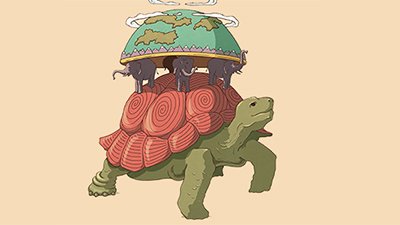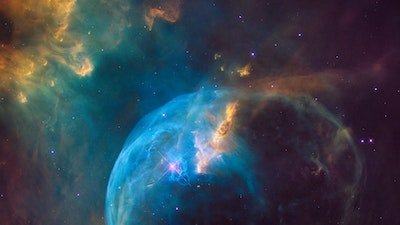
Cosmic Curveballs
Searching for dark matter, the antiuniverse, and our cosmic roots
News Source
- Nature News: “Antiuniverse Here We Come”
Space Shuttle Endeavour, soon to embark on its final flight, will deploy the $2 billion Alpha Magnetic Spectrometer. Mounted on the International Space Station, the device will search for anti-matter and dark matter.
Anti-matter consists of particles of the same mass but opposite charge as the subatomic particles we generally think of (like electrons and protons). We don’t encounter anti-matter in our everyday lives (unless we enjoy science fiction) because it is produced in particle accelerators and because it is explosively annihilated when it comes in contact with ordinary matter.
The dearth of anti-matter in the universe is a big problem for the big bang. The big bang should have produced equal quantities of matter and anti-matter. Yet the universe consists of mostly matter.
“If there’s matter, there must be antimatter. The question is, where’s the Universe made of antimatter?” asks AMS developer Samuel Ting. The search for “a realm of the Universe that few believe exists” has made the AMS a matter of controversy. Many physicists believe that if an antiuniverse existed, matter-antimatter collisions at the boundary between the two realms would have already been detected.
While dark matter is needed to justify certain aspects of the big bang idea, creationist cosmology models work whether it exists or not.
Dark matter, if it exists, is invisible matter which exerts a gravitational pull on visible objects. There is not enough mass in the visible components of galaxies to hold together, so astronomers have postulated the presence of dark matter to balance things out. While dark matter is needed to justify certain aspects of the big bang idea, creationist cosmology models work whether it exists or not.
The AMS will look for “telltale footprints” left by collisions of dark matter particles, “chunks of antimatter from the far Universe,” and whatever other particles are contained in the cosmic rays normally destroyed by our atmosphere. The AMS will bend cosmic rays around a magnet surrounded by particle detectors designed to identify particles by precisely measuring their energy, charge, and behavior.
Many discoveries in science have been made by hypothesizing that something unseen must exist to explain observable behavior and then looking for that mystery player. While the rather astronomical cost of the detector is not a subject for debate in this forum, a search for dark matter to explain the observable behavior of spatial phenomena “could reshape modern understanding of the universe.”1 But contrary to the expectations of many, no such discovery can peer back into time and determine “how our universe began and evolved.”2
Further Reading
- Black Holes
- Galaxies—Unexplained Spirals
- Look to Genesis for Questions of “Why?”
- Missing Antimatter Challenges the ’Big Bang’ Theory
- Astronomy
For More Information: Get Answers
Remember, if you see a news story that might merit some attention, let us know about it! (Note: if the story originates from the Associated Press, FOX News, MSNBC, the New York Times, or another major national media outlet, we will most likely have already heard about it.) And thanks to all of our readers who have submitted great news tips to us. If you didn’t catch all the latest News to Know, why not take a look to see what you’ve missed?
(Please note that links will take you directly to the source. Answers in Genesis is not responsible for content on the websites to which we refer. For more information, please see our Privacy Policy.)
Footnotes
- Irene Klotz, “Scientists Hope to Illuminate Universe’s Dark Side,” Reuters, April 27, 2011, http://ams.nasa.gov/Documents/AMS%20in%20The%20News/Scientists%20hope%20to%20illuminate%20universe's%20dark%20side.pdf.
- John Zarrella, “Astronauts Unsure Where They Go Next,” CNN, April 29, 2011, http://www.cnn.com/2011/US/04/27/endeavour.ending/.
Recommended Resources

Answers in Genesis is an apologetics ministry, dedicated to helping Christians defend their faith and proclaim the good news of Jesus Christ.
- Customer Service 800.778.3390
- Available Monday–Friday | 9 AM–5 PM ET
- © 2025 Answers in Genesis




